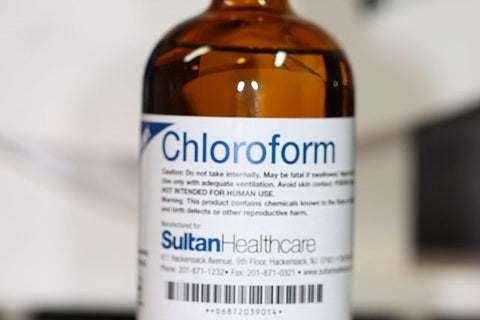Discover the Essence of Elegance with Lancôme Perfumes
Disclosure: I’m partnering with Lancôme on Amazon
🌟 Lancôme Idôle – A bold, clean, and luminous fragrance that celebrates the power of modern femininity
🌹 Lancôme Trésor – The timeless scent of love and romance. Warm, floral, and utterly enchanting
✨ Lancôme La Vie Est Belle – Embrace the beauty of life with this radiant blend of sweet and floral notes
💎 Lancôme Idôle Moments – Capturing life’s most precious memories with a refined and uplifting fragrance
🌸 Lancôme La Vie Est Belle Iris Absolu – A luxurious twist on the classic La Vie Est Belle, featuring an elegant blend of iris and fruity notes
☀️ Lancôme La Vie Est Belle Soleil Eau de Parfum – Radiate warmth and joy with this sunny and sparkling interpretation of La Vie Est Belle
🌌 Lancôme Trésor Midnight – A mysterious and enchanting fragrance that exudes sensuality with deep alluring notes
🌟 Lancôme Miracle – A bright and vibrant fragrance blending fresh floral and spicy notes for a dynamic experience
🌸 Lancôme Idôle Aura – A radiant and empowering fragrance with captivating floral and fruity notes
💖 Lancôme La Vie Est Belle Intensément – A more intense vibrant version of La Vie Est Belle
🌟 Lancôme La Vie Est Belle Extraordinary Moments – Celebrate the extraordinary moments of life with a blend of delicate floral and fruity notes
🌹 Lancôme La Vie Est Belle Rose Extraordinaire – A fresh and delicate floral scent that enhances the beloved La Vie Est Belle, with the radiant touch of roses
🍯 Lancôme Idôle Nectar – A rich and warm floral fragrance that adds a luxurious honeyed sweetness to the beloved Idôle scent
🔥 Lancôme Idôle L’Intense – A more intense interpretation of the iconic Idôle
Indulge yourself or gift someone special with these luxurious scents that turn heads and capture hearts. Experience elegance in a bottle—shop Lancôme perfumes today!

Embark on a mysterious journey into the world of chloroform, a chemical compound with a distinct and intriguing scent. Known for its historical use as an anesthetic, chloroform possesses a unique aroma that has both fascinated and raised questions. Join us as we explore the question: What does chloroform smell like?
The Enigmatic Aroma of Chloroform
Chloroform's fragrance is a curious blend of chemical nuances, evoking a sense of intrigue and caution. Unlike the fresh and lively notes of calamansi, chloroform's scent is characterized by its chemical nature and historical associations. Let's delve into the olfactory experience of chloroform:
Chemical Complexity: A Synthetic Symphony
Approaching chloroform, the first olfactory impression is one of chemical complexity. Imagine a symphony of synthetic notes, with a subtle hint of sweetness intertwined with a solvent-like sharpness. Chloroform's scent is a testament to its chemical composition, providing a distinctive and somewhat polarizing olfactory encounter.
Sweet Undertones: A Deceptive Allure
Beneath the surface of chloroform's chemical bouquet lies a deceptive allure of sweetness. The scent carries faint echoes of a mild, sweet undertone, adding an unexpected layer to its overall profile. This sweetness, however, is intertwined with the unmistakable sharpness that defines chloroform's aroma.
Solvent Sharpness: A Cautionary Note
One cannot ignore the solvent sharpness that characterizes chloroform's scent. Picture the pungency of industrial chemicals, reminiscent of a laboratory setting. The sharp and somewhat medicinal quality of chloroform's aroma serves as a cautionary note, highlighting its use as an anesthetic and its potential hazards.
Historical Echoes: Anesthetic Nostalgia
For those familiar with medical history, chloroform's fragrance may evoke nostalgic echoes of its historical role as an anesthetic. The scent carries a sense of the past, harkening back to a time when chloroform was employed for surgical procedures, intertwined with both the marvels and risks of early medical practices.
Nostalgia vs. Caution: A Balancing Act
Chloroform's aroma, therefore, presents a balancing act between nostalgic associations and cautionary notes. While some may find a certain fascination in the historical echoes of its scent, others approach it with a heightened awareness of its potential risks and the advancements in modern anesthesia.
Factors Influencing the Perception of Chloroform's Scent
Understanding the factors that influence the perception of chloroform's scent is crucial in appreciating its complexity:
-
Chemical Composition: Chloroform's distinctive scent is a result of its chemical composition, and variations in production methods can influence its olfactory profile.
-
Purity Levels: The purity of chloroform can impact its scent. Higher purity levels may exhibit a cleaner and more defined fragrance.
-
Storage Conditions: The environment in which chloroform is stored can influence its scent. Proper storage conditions help maintain its stability and prevent undesirable changes in fragrance.
-
Personal Sensitivity: Individuals may perceive chloroform's scent differently based on their personal sensitivity to certain chemical odors.
-
Association with Memories: Familiarity with chloroform's historical use in medical settings may influence the emotional and sensory response to its scent.
-
Concentration: The concentration of chloroform in a given environment can affect the intensity of its fragrance, with higher concentrations leading to a more pronounced odor.
Safety Considerations and Ethical Usage
It is crucial to approach chloroform with caution due to its historical and present-day associations with potential health risks. In modern times, chloroform is primarily used in controlled laboratory settings and industrial applications. Any encounter with chloroform should adhere to strict safety guidelines to ensure the well-being of individuals.
In Conclusion:
Chloroform's scent, with its chemical complexity, sweet undertones, and solvent sharpness, invites contemplation on its historical significance and cautionary associations. While it may evoke nostalgia for some, it is essential to approach chloroform with awareness of its potential risks and ethical considerations in its usage. The next time you encounter the enigmatic scent of chloroform, let it serve as a reminder of the intricate interplay between science, history, and the senses.